Rare-plant hunters race against time to save at-risk species
Scientists rappel down cliffs and trek through forests to collect plants and seeds
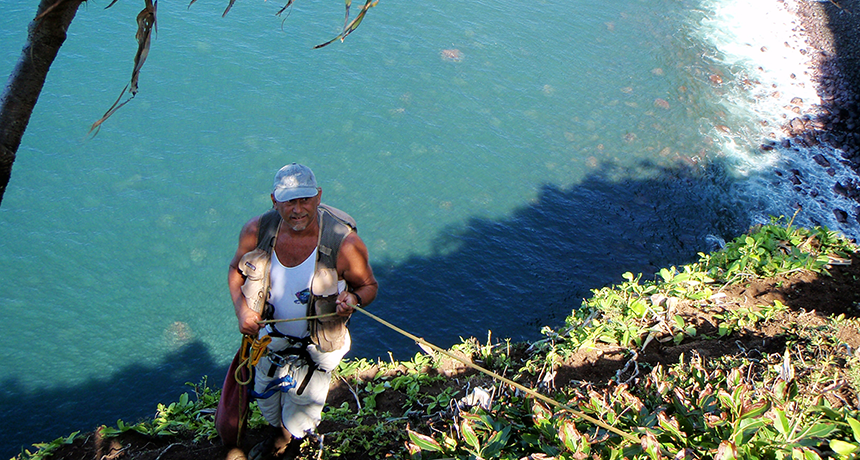
Steve Perlman rappels down a cliff in the Wailau Valley on the Hawaiian island of Molokai. He is a botanist who has spent the last 45 years searching for, and protecting, rare plants
Hank Oppenheimer
Somewhere on a windswept cliff on the edge of the Hawaiian island of Kauai grows a plant that looks like a cabbage on a stick. It’s the last wild plant of its kind, and its exact location is a closely guarded secret.
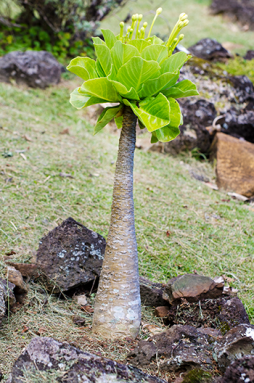
Hawaiians call it alula (AH-lou-lah). Even on this island chain, known for its exotic greenery, the alula stands out. Its rosette of wide, leathery leaves sits atop a short, bulbous stem. Creamy yellow flowers give off a honeysuckle scent.
Alula used to be an important lei plant. A lei is a traditional garland of flowers worn around the neck. The alula’s flowers “could be either strung or woven into leis, which were made as gifts of love or for special occasions,” says Kawika Winter. Winter is an ecologist and a Hawaiian who works at the He’eia National Estuarine Research Reserve on Oahu.
As Winter well knows, the days when Hawaiians could use alula flowers in their leis are long gone. Alula were once a common sight in Kauai and on the neighboring island of Nihau. That was before people brought plant-munching goats, pigs and rats to Hawaii. People also brought plants from other places. These plants tended to crowd out native Hawaiian ones, including alula.
Forty years ago, the alula hadn’t yet dwindled to one last, lonely plant. There was still a small population clinging to a cliff face. Steve Perlman rappelled down a cliff to collect their seeds.
Perlman arrived just in time. He is a field botanist with the Plant Extinction Prevention Program at the University of Hawaii at Manoa. Perlman is based at the National Tropical Botanical Gardens (NTBG) in Kalaheo, so he gave his seeds to horticulturists working there.
Horticulturists are experts in cultivating plants. The ones at NTBG knew how rare alula already were when Perlman handed over his seeds 40 years ago. They were eager to grow lots of them and save the plant from extinction.
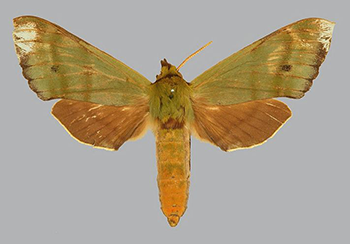
But there was a problem. The alula’s natural pollinator is the fabulous green sphinx moth (yes, that’s its real name). And there weren’t enough of the moths to do the job. That’s because so much land has been cleared for houses and food crops, removing the plants the moth needs for food. Today there are very, very few fabulous green sphinx moths left.
NTBG’s horticulturists had a solution to the missing moth problem: pollinate alula by hand. They dipped small paintbrushes into the pollen of some greenhouse alula flowers and dabbed it onto the stigmas (the female reproductive parts) of other alula flowers. It worked. They grew so many that alula plants now are sold around the world as a houseplant called Hawaiian palm. Alula have also been re-introduced into the wild places where they once grew. But these aren’t technically considered wild plants. That’s because humans must constantly tend to them.
Today, the plant is listed as endangered. And it’s against the law for anyone to damage or kill it. This listing, along with Perlman’s efforts, has been a life preserver for alula.
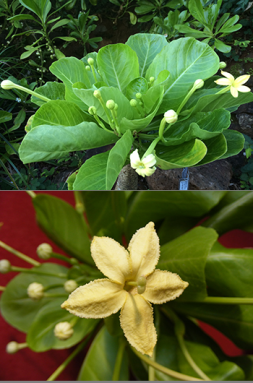
“We won’t lose this species now,” says Perlman. “It’s a success story.”
At least, he’s pretty sure it’s a success story. But sometimes he wonders. Winter is not so sure either. As they both point out, alula plants would die off if humans stopped hand-pollinating them. True success will come only when they can be planted in the wild and survive on their own, says Winter.
“Researchers and conservationists are trying,” he says. “Hopefully our grandchildren will see these clinging to the cliffs once again.”
For now, constant hand-pollination is better than the alternative — extinction. More than 130 plant species have gone extinct in Hawaii since people began keeping records a couple hundred years ago. Perlman has personally witnessed 20 species go extinct in the state since he started hunting for rare plants 45 years ago. It is, he says, a lot like losing 20 friends.
The bigger picture
Hawaii is an extreme example of a place where native plants are in trouble. But it’s not alone. Plants are at risk around the world. In fact, one in five of the world’s plants is at risk of extinction. This is according to a 2016 report from the Royal Botanic Gardens (RBG), Kew. It’s in London, England.
Michael Way is an ecologist who works for the RBG. Like Perlman, he is a rare-plant hunter. He travels to hard-to-reach places to collect rare plants, or their seeds, hoping to save them from extinction.
In August 2016, Way was part of a team that hiked into a remote area of northern Oregon to collect seeds from the Brewer spruce. This is a rare evergreen tree with droopy branches covered in curtains of needle-like leaves. Its seed-bearing cones measure eight to 15 centimeters (three to six inches) — longer than most other North American spruce cones.
The Brewer spruce is native to northwest North America and one of the rarest trees on the continent. Its greatest threats are wildfires and climate change, which is causing temperatures to rise on the cool, north-facing summits where it grows. The tree prefers chilly conditions.
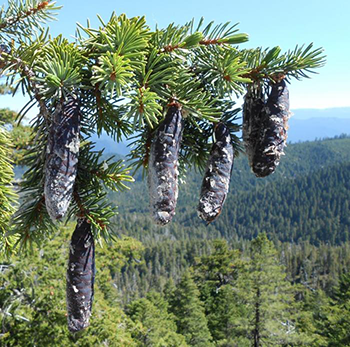
“It’s a survivor from the glacial period 10,000 years ago,” says Way.
Despite its longevity, the Brewer spruce’s days may be numbered. As temperatures continue to rise on its native mountainsides, the tree will have nowhere to go, says Way.
Today, Brewer spruce are found in only six places in Oregon. There are perhaps several thousand left. Most of them grow in remote areas on National Forest land. But there are no laws protecting the Brewer spruce. The only thing keeping the trees safe is their isolated location.
Way felt it was important to collect seeds before these trees disappear altogether. With the help of colleagues from the U.S. Forest Service, he recruited a group of arborists (experts in cultivating trees and shrubs) and parachuting firefighters known as “smoke jumpers.”
The arborists and smoke jumpers are skilled climbers and easily clambered 10 meters (about 33 feet) up into the trees’ crowns. They secured themselves at the top with climbing harnesses and dropped cones into sacks tied to their waists. Down below, Way waited to catch the sacks.
All together, they climbed 60 trees and collected 3,000 cones. Half the cones went to a seed bank run by the U.S. Department of Agriculture’s National Center for Genetic Resources Preservation. That’s in Fort Collins, Colo. Way took the other half back with him to the RBG’s seed bank in Wakehurst, England.
Seed banks safely store seeds from many species. Now, if the Brewer spruce dies out in the wild, scientists will still have seeds to grow and study, says Way. But like Perlman, he worries it’s not enough. “It doesn’t help us protect them in their natural habitat,” he says.
What’s at stake when plants vanish

The disappearance of the Brewer spruce or any other plant could have important consequences. Throughout history, plants have often been sources of medicines, says Way. If they die out before we understand their value, we’ll never know what illnesses they might have treated.
Not only that, but plants are at the bottom of the food chain, he adds. That means they feed other organisms. A diversity of plants means a diversity of animals. “A healthy ecosystem needs this,” says Way.
Of course, we can only protect the rare plants we know about. That’s why Aaron Floden was excited to discover a new and rare species of trillium (TRILL-ee-uhm) in 2012.
Trillium is a common plant genus (GEE-nuss). A genus is a group of closely related species. The genus Trillium produces three-petalled flowers in shades of red, purple, pink, white, yellow or green. Trilliums are found across eastern North America, in parts of western North America and also in eastern Asia.
“Despite people thinking North America is well-explored, our collection of this trillium was the first ever,” says Floden. He’s a plant taxonomist (Tax-ON-uh-mist) who works at the Missouri Botanical Garden in St. Louis. A plant taxonomist is a scientist who studies the origins of plants and relationships between them.
Scientists have identified roughly 50 different trillium species. Some are rarer than others. Floden named the one he identified in 2012 Trillium tennesseense, after the eastern Tennessee property where he found it.
That property belongs to a local high-school biology teacher and his wife. They got in touch with Floden after they noticed a plant growing near their driveway that puzzled them. A few days after that call, Floden drove out to the couple’s rural home to see if he could solve the mystery.
Sure enough, near their driveway he found a small, delicate plant with three-petalled flowers. The petals were greenish-yellow, turning a dark reddish-brown at the base. Bending down to smell the flower, he caught a whiff of plastic and petroleum — what he describes as an “old-fashioned boot polish” smell.
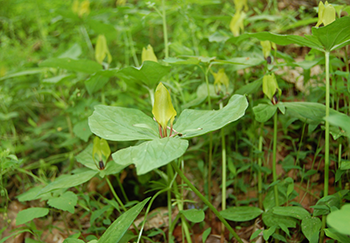
His first thought was to wonder what kind of pollinator would be attracted to that smell. Different trillium species have different smells. One smells like dirty, stinky feet, and another like an unclean rodent cage, says Floden. Several trillium species smell like decaying meat. But some have good smells — such as freshly baked banana bread, lemon or even fermenting apples.
Floden’s second thought was to marvel at his luck. “It was very exciting to be the first botanist, and one of maybe a dozen people in the whole world, to have seen what was likely to be a new species of trillium,” he says.
He dug up a few plants to study back at his lab. He measured different parts of the plant and compared them to known species. He found the trilliums from Tennessee were different. The shape and size of the plant’s male and female reproductive parts differed from other trilliums.
This made him strongly suspect it was a new species. To be sure, he analyzed the plant’s DNA. DNA is a long, spiral-shaped molecule inside nearly every cell in living things. This molecule carries genetic information — instructions for how that plant or animal (or human) looks and functions. And whether it smells like boot polish.
“We get the DNA out of a small piece of the plant — a piece about the size of your thumbnail is enough,” says Floden.
He found the sequence, or order, of the trillium’s DNA was a bit different from other trilliums’ DNA. In fact, it was different enough to be a separate species.
Floden was the first scientist to identify Trillium tennesseense. But that’s not the only reason he was excited. Identifying the plant meant he and others might eventually use the finding to protect the trillium’s habitat.
That’s because laws protecting plants and animals are often based on how rare they are. Floden suspects Trillium tennesseense is very rare. Despite looking carefully in the area for more of them, he and his colleagues found the flowers growing in just four more places.
One of those places has since been plowed for a horse pasture. The four remaining sites total about two hectares (five acres). Floden doesn’t think he’ll find any more of the flowers, inside or outside Tennessee.
He worries for the plant’s future. That’s because laws protect the trillium only if it grows on land belonging to the state of Tennessee. There, it is protected against digging, picking and destruction.
“Since all the plants are on private property, anything can be done to the land or plant,” says Floden. “This does not provide the kind of protection something so rare needs.”
But that doesn’t mean plant hunters like Floden, Way and Perlman will stop trying. The trio is committed to scouring the ends of the Earth for endangered species — and trying their best to save them.







